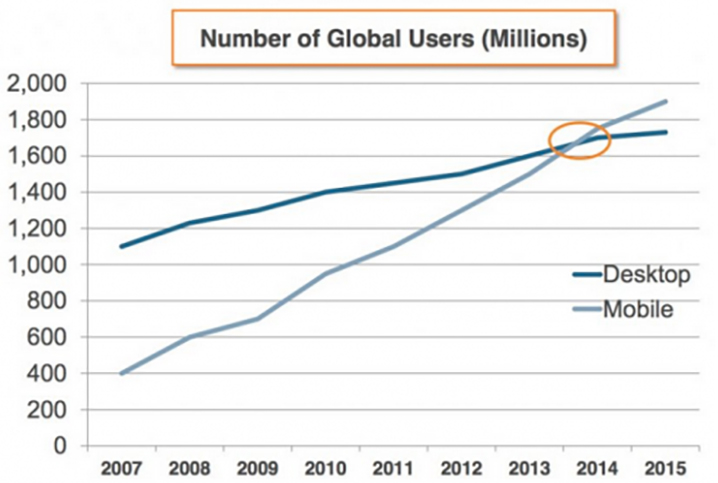Since the development of search engines on the World Wide Web, Webmasters have been attempting to optimize their websites to achieve the highest rank possible. This would allow them to receive organic traffic. In today’s search engine-driven internet, it is difficult to imagine that the first search engine, Archie, was introduced 25 years ago in 1990 as a tool to index FTP archives allowing people to find specific files.
By the year 2000, Google started to introduce search algorithm changes that would have a drastic impact on the “Google Dance”. The “Google Dance” was the monthly updating of search engine placement that all Webmasters would look forward to with anticipation. In 2003 Google introduced its first major update which was called “Boston” and started us on the path that we are on today. In the early days, there were perhaps 10 or 12 factors that people looked at to optimize their website. Recently, it has been estimated that the total metrics involved in SEO scoring could be in the 400–600 range.
Google is now making 500 changes a year to its algorithm, all designed to provide a better user experience. Google considers it a success when a user can find what they are seeking within the first few pages of a search query result. Let’s take a look at what SEO trends in 2016 we should be focusing on.

Word Count SEO Trends in 2016
In the past two years, Google has been showing a preference for comprehensive, unique content. According to one report, top-ranking content in the Google search engines are now averaging between 1,140 – 1,285 words. This is up from an average of 902 words per article in 2014. Many SEO articles will tell you that you should write articles no shorter than 300 words just to qualify to be indexed. While this trend was popular two to three years ago, it is clear that Google wants more content in each article. This provides more for the search engine to work with when indexing your pages. This trend in Google affirms the fact that Google is moving towards a “content branding” model that focuses on unique content and comprehensive writing.

Keyword SEO Trends in 2016
Keywords are still a popular focus for content in 2016 and should always be incorporated into your title, header, sub-headers, introduction paragraph and conclusion paragraph. In the most recent SearchMetrics report, most top-ranking pages displayed an increase in the total number of keywords used in the body of the text. If you are using a Content Management System such as WordPress, plugins like the YOAST SEO Plugin will make managing your SEO for each article an intuitive part of your writing experience.
Conversely, Google has gotten much better at interpreting meaning and intent within your articles. In the past, you may have had to use a keyword phrase multiple times within an article to get a point across. For example, “Best Hotel” might be used three or four times in an article to make the point that this article is about the best hotel in our local area. With the Google algorithm in place today, just talking about your stay and experiences at the hotel will trigger the semantics engine to determine that you are talking about a hotel experience.
It is important to remember that 75 percent of searches are between three and five words in length. People are becoming savvier about using search engines and realize that limited phrases of one or two words will not return the content they seek. As the creator of content on your website, it is important that you consider this when developing your SEO strategy.
Mobile vs Desktop SEO Trends in 2016
Desktop users have historically been the focus of Webmasters designing content for the Internet. Earlier in 2015, mobile searches surpassed desktop searches for the first time. Google has gone as far as to announce that mobile and desktop traffic was on “relatively equal” footing and that mobile devices would far surpass desktop devices for searches in 2016. Google predicts that desktop searches will fade into obscurity over the next five years. It is critical now, more than ever, that you address the need to have a responsive website for mobile devices.
Social Media SEO Trends in 2016
Google currently has an arrangement in place with Facebook and Twitter to increase mobile search results from those two social media systems. During 2016, more platforms will be added to the increased indexed results that Google receives from social media systems. As in the past, other search engines will follow Google lead to index more and more social media content. Google intends to increase the value of “Social Media” posts and consider them as important as “Web” posts. This will blur the line even further from an SEO standpoint.
Video Content SEO Trends in 2016
Today we look at written content as the industry standard baseline for most brands. As early as 2012 we were starting to see an increase in video content traffic. There are now many services that offer video hosting services and the use of Video Content in Web articles and Social Media has skyrocketed. Google has begun to return video ads in search results and they are finding that video content extends engagement, reach, effectiveness and return on investment.
Video content has a significant advantage over written content in that it engages your audience on a deeper level by providing an immersive experience that the written word cannot compete with. I not only suggest to clients that they use video content to improve the overall look and feel of their website, but they also consider creating unique video content on a regular basis as they would write blog articles on a regular basis.

Local SEO Trends in 2016
50% of consumers will visit a location within 24 hours of searching it on a mobile device. Google announced in May of 2014 that 72% of consumers who searched on a mobile device will visit a location that is within 5 miles of their location. People are also more likely to choose a service based on reviews left by other people on sites such as Google, Yelp and others. The increase in mobile searches in 2016 will have a major impact on any local business, especially for hospitality and retail venues. It is critical that you incorporate testimonials or reviews in your content.
Focusing on improving your rank in local searches, Google Plus Local, Google Maps and attaining positive reviews from local customers should be an absolute focus for your business in 2016. Acquiring citations for your address location will increase your Google Plus Local and Google Maps position and increase your foot traffic to your local destination.
Local search does have a unique relationship with mobile search and voice search after the recent Google Pigeon update. This should be a clear indicator to anyone that Google has a significant commitment to increasing the value of their local search results. Local SEO Trends in 2016 will focus primarily on Google maps, citations and Google+ testimonials.
Other SEO Trends in 2016
Internal links continue to increase since 2014 and should be used to provide users an easy path to additional, relevant content on your website. This also reduces the bounce rate and improves your ranking by giving users content that was relevant to the keywords they used to search. The goal is to guide the user in an optimal fashion through the content you provide. This will ensure the user stays on your site and has a satisfactory experience.
Header and meta-tags are still considered important with 99% of the top ten results having a meta-description and 80% of the top ten results using an H1 tag. While meta-tags may no longer give you the weighted SEO score value they did just a few years ago, they still provide text copy for how your listing will appear in Google.
Internal linking is still a critical strategy to consider in 2016 to help keep people on your site and engaged in your content. External linking is also critical when it leads to relevant information about the article the external link appears. Backlinking, the act of someone placing a link to your website or web article from another site, is still considered one of the more important strategies to employ. That being said, Google has been on a mission to wipe out spammy, unrelated or purchased backlinks and even punishes websites for engaging in this type of activity. Backlinks, in my opinion, should always be done manually in an effort to network with like sites that contain relevant data.
Closing Thoughts
Regardless of your experience and technical level, it is important that you grasp the concept that your web-related content provides no benefit to your company unless someone is seeing it. While many people will pay advertising dollars with pay-per-click engines, this only provides your site with traffic for as long as you pay. Investing time in improving your organic Search Engine placements will continue to offer returns far into the future. The key is to engage your customer, provide them with relevant content and provide them with an excellent user experience.



